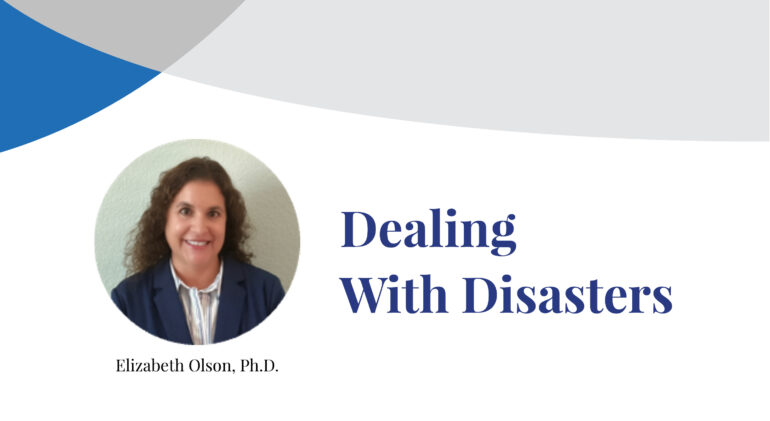In the past, it seemed the planet was hit with natural or human-made disasters much more infrequently. In the age of 24-hour news cycles and social media, it is hard to avoid exposure to disasters. While it’s true that information is more readily available with today’s technology, it’s also true that disasters seem to occur much more frequently.
Dealing with disasters can be a huge challenge physically and emotionally. Research shows that people tend to respond better to natural disasters (e.g., earthquakes, fires, hurricanes) than human-made ones (e.g., terrorist attacks, school shootings, war), because we understand on some level that nature cannot be controlled. Disasters that humans cause, on the other hand, tend to result from either human error or deliberate decisions.
Primary victims are those directly impacted by the disaster, while secondary victims witnessed it but were not impacted directly. Victims of both types can struggle with psychological symptoms following disasters. Common reactions to disasters can be anger, avoidance, blame, anxiety, depression, post-traumatic stress disorder, and even physical symptoms such as lower immune function and sleep disturbances. Stress resulting from disasters can lead to marital distress, parental discord, and financial difficulties.
Understanding the disaster life cycle, or phases of disaster, can help with understanding what to expect. During the preimpact phase, individuals can make preparations such as boarding up windows or evacuating the area. On the other hand, there is no warning of some disasters. Immediately after a disaster hits, the heroic phase may come into play. During this phase, people rush to help, and those impacted are likely in shock. There is an urgent need to address basic requirements such as shelter, food, and water.
The next phase is the honeymoon phase. During this phase, community bonding occurs, people receive assistance through agencies such as the American Red Cross, and there are feelings of hope and optimism. However, this phase does not last, and victims will eventually enter disillusionment. The reality of what has occurred sets in, and people may feel that help is not enough or that recovery will be a much longer process than they initially anticipated. Perhaps there will be anger toward government bodies. Those who were directly impacted may feel like others not directly impacted have moved on and abandoned them. Blaming can become prevalent. The recovery phase occurs once communities start rebuilding. This phase may last months or even years.
Understanding phases of disaster can help identify normal reactions to abnormal events and when people need more support. Some people may seek out family or friends for support while others withdraw. There may be feelings of guilt, anger, and fear. Young children may exhibit regression in behavior such as thumb sucking, bed-wetting, and becoming clingier. Older children and adolescents may have difficulty sleeping, irritability, aggressiveness, physical complaints, difficulty concentrating, excessive worry, and conflicts with others.
In reacting to disasters and helping others, it is important to keep in mind Maslow’s hierarchy of needs. Basic needs such as safety, shelter, food, medicine, and water need to be met first. Then emotional needs can be addressed. Feelings should be validated. If working with children, let them guide discussions, and be honest about what has occurred at a developmentally appropriate level. Limit their exposure to media and social media. Kids (and many adults) thrive on predictable routines and feeling safe. Therefore, getting them back to school or in some other routine will help. Parents who are struggling should seek support, as children are intuitive and are guided by their parents’ reactions and behaviors.
In providing support to communities, it is important for psychologists to work with local community leaders to operate in a culturally sensitive way. For example, some cultures will respond more readily to support from religious leaders than mental health professionals. Some disasters displace people from their country of origin, which adds additional layers of distress and adjustment. Helping people focus on the things they can control can also be very helpful. Professional organizations such as the American Psychological Association and National Association of School Psychologists provide valuable information to support adults and children who have experienced disasters.
Unfortunately, natural and human-made disasters alike are inevitable, so understanding the existing research on how to prepare in advance and respond afterward will continue to be important. There is a lot we can control, and there are many resources available to provide support.

